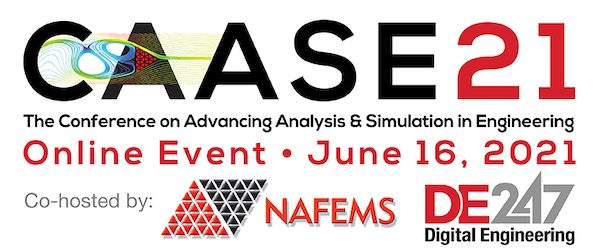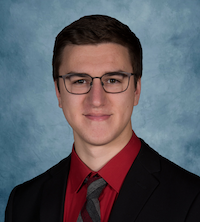CAASE21 Preview: Trusting the Model
In his upcoming CAASE21 presentation, Jakob Hartl of Purdue University offers a rigorous approach to putting faith in simulation results.

Latest News
May 18, 2021
Jakob Hartl, a PhD student in the Aerospace Systems program at Purdue University, specializes in a subject that might strike many of us as a paradox: ascertaining uncertainty. This is the core of his upcoming presentation at CAASE21 (June 16), built on a simulation project involving a CFD-based compressor model for Rolls-Royce.
“As computer capabilities increase, we are also seeing engineers relying more on computer simulation. It’s less expensive than traditional physical experiment, so it’s gaining popularity. But it’s a relatively new kind of science,” Hartl observed.
He has given several talks on the Rolls-Royce compressor case study, so, this time, rather than giving the same talk, he will discuss the progress he has seen—an “are-we-there-yet type of assessment,” in his words. “Can we demonstrate simulation reliability with the technologies and knowledge we have? That’s what I’ll talk about,” he said.
This year, he plans to review the results from a rigorous verification, validation, and uncertainty quantification (VVUQ) analysis of a 3D centrifugal compressor aerodynamic model that was performed as part of a collaboration between Purdue University and Rolls-Royce. He’ll highlight some notable advantages of the VVUQ procedures, but promises to spend more time examining the unaddressed issues.

The key to ensuring simulation reliability is test data. “It’s really hard to say how reliable a simulation is without something close to reality to compare it to, which is an experiment,” he pointed out.
In his view, the four pillars to simulation reliability are:
- the quality of the analysts themselves (the simulation software users’ expertise);
- the physics model involved (the best computational model to represent the physical event simulated);
- the verification and validation activities; and
- uncertainty quantification.
Contrary to the impression his talk might give, Hartl said he prefers simpler models to the more complex, expensive models, but with a caveat. “As long as you take the time and effort to understand what the simulation means, and the errors and uncertainties in it, the simpler model lets you do more runs and get more value from it,” he said.
The the Conference on Advancing Analysis & Simulation in Engineering (CAASE21) is co-presented by NAFEMS Americas and Digital Engineering. You can learn more about the Jakob Hartls session, Application of a Verification and Validation Framework for Establishing Trust in Model Predictions, and register for the conference at the CAASE21 website.
Subscribe to our FREE magazine, FREE email newsletters or both!
Latest News






